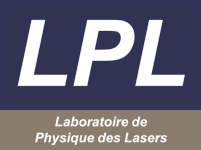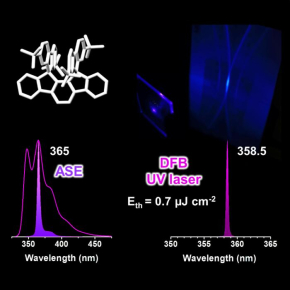World Record for a UV Organic Laser Based on a Novel Molecular Architecture
A French-Japanese collaboration has developed an ultraviolet (UV) organic laser emitting at a record wavelength of 358.5 nanometers — the shortest ever achieved for this type of device.
The strategy relies on positional isomerism, meaning the variation in the position of certain chemical groups within the same molecule. By isolating two isomers from a family of emissive molecules known as dispirofluorene-indenofluorenes, researchers at the University of Rennes observed that one of the two exhibited significantly reduced intermolecular aggregation compared to its counterpart, greatly enhancing the optical efficiency of the material. In collaboration with Kyushu University in Japan, the OPAL team from LPL then integrated this material into a distributed feedback laser (DFB) architecture, achieving light emission at 358.5 nm — the shortest wavelength ever reported for an organic laser of this kind.
This breakthrough paves the way for a new generation of compact, cost-effective, and easily tunable light sources for applications such as electronic circuit patterning, high-precision 3D printing, and certain medical treatments.
These results have been published in Advanced Functional Materials and are the subject of a CNRS press release.

